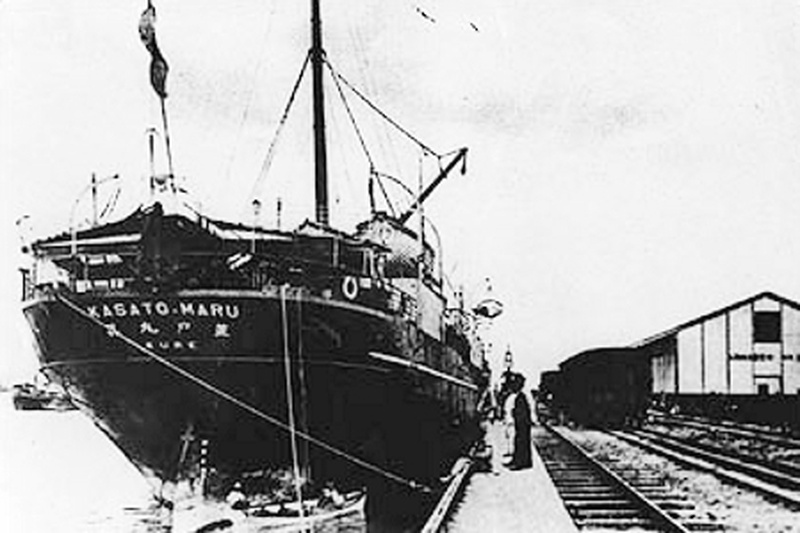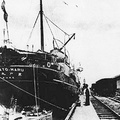“No one can take away what you’ve studied” was or still is a sentence repeated to exhaustion to children by generations of parents of Japanese ancestry in these 109 years in Brazil. In case this is a valid maxim for all time and for all children, to Japanese immigrants the emphasis on education has meanings that have changed over time according to the trajectory of the families that settled in Brazil.
The dream of acquiring riches and returning to Japan in a few years’ time was shared by the first 781 Japanese who came aboard the ship Kasato Maru in 1908 and by the 169,000 parents, sons and daughters, and laborers who arrived before World War II. For that to happen, it was necessary to ensure that the children enjoyed an education similar to that of Japanese children, so they wouldn’t lag behind after returning to their native land. The effort undertaken by the parents meant sacrificing a portion of their meager earnings at the end of the agricultural year so their children could go to school. In the agricultural colonies where families owned small plots of land—many of these in areas where it was necessary to clear the land before planting—the building of schools was among the outlined priorities. It was unthinkable to leave their children without an education. Faced with frequent requests for teachers and teaching materials, the Japanese government, through its consulate in São Paulo, created a department—Fukeikai—especially geared to attending these requests. Thus, there came teachers who would be provided for by the parents of the students at the various locations, along with the same books used by Japanese students, in addition to magazines and supplementary materials to reinforce reading and training in the Japanese language. Their growth was remarkable: in 1932 there were 176 schools; in 1938 there were no less than 476.
Being Japanese in a foreign land, however, led to problems not taken into account at the outset. The coexistence with Brazilians and with immigrants from other countries, particularly Italians, added a new item to the families’ checklist: the need for communication. From the very beginning of their life in Brazil, it became clear that learning the Portuguese language would be crucial. That’s when the children began playing the role of interpreters, of intermediaries between their parents and the neighbors and bosses. They had a daily journey of learning, between their Brazilian school and the Nihon gakko.
“No one can take away what you’ve studied.” This sentence became ever more true as the dream of returning to the mother country became ever more distant. Get rich and go back? That would be difficult, very difficult. There had to be a different path. The only safeguard was to provide an education to the children, so no one could take it away from them. Often barefoot, the children walked to Brazilian schools. They were made fun of because they spoke very bad Portuguese (most of them started learning the language only at the age of seven, after entering Brazilian schools), but they didn’t give up because of pressure from their parents. The jun Nisei1 and the Nisei were the ones responsible for introducing Brazil, bringing customs, forms of behavior, and the country’s language into Japanese homes.
The appeal of the society in which they now lived was stronger than the one for the preservation of their parents’ culture. As they advanced in their studies, Portuguese became the language of communication among youths and children, though Japanese remained the predominant language at home and in the kaikans. The Brazilian-born first generation lived this double life intensely.
The years before World War II were marked by the compulsory march toward a slow integration into the adopting society. As the nationalization policy initiated in 1937 prohibited the teaching of foreign languages, the Nihon gakko were forced to close their doors that year. Due to the war, the use of Japanese in public places was banned, as was the circulation of newspapers. At the height of the war, the mere possession of written texts in Japanese was grounds for arrest. Books, magazines, and documents written in Japanese were lost—either burned or buried.
The decade following the end of World War II marked the beginning of important changes in the heart of the Japanese community in Brazil: the heads of more than half of the families abandoned agricultural activities to devote themselves to urban occupations in the service sector; these demanded little knowledge of the Portuguese language while ensuring both their livelihoods and a higher leveleducation that rural schools were unable to offer. They were fathers and mothers who dedicated themselves to small businesses such as greengroceries, Mom and Pop stores, barber shops, dry cleaners. Their children could then attend schools in the small towns in the interior of the state, or, with much sacrifice on the parents’ part, go to schools in the capital.
Education, education, and more education remained the only way to ensure a solid future in the aftermath of the war. The boys dedicated themselves to careers—preferably those considered “noble” ones, such as law, medicine, engineering. The girls prepared themselves to attain a minimum of financial independence, turning to courses such as sewing and hairdressing. As early as the 1950s, many girls were receiving higher education as specialized professionals. No one could take that away from them: neither wars nor the discrimination that so often accompanied them. A “slanted-eye” lawyer arguing in court? Or a representative speaking in Portuguese in Brazil’s Chamber of Deputies? Or a university professor teaching Brazilian students?
Yes, these characters are the children of the dry cleaners and the small merchants. They are the children who went barefoot to the rural schools; the children who taught the first words of the Portuguese language to their parents, who suffered discrimination from their fellow students. They are the bilingual Nisei generation who, by force of circumstances, adopted Portuguese as their main language; who married people of the same ancestry; who worked not only as high-skilled professionals, but also in urban, mid-level technical occupations. It’s interesting to note the significant number of accountants of Japanese ancestry in the city of São Paulo.
The sentence “I need to kill a Japanese to go to college” was frequently heard in the 1960s and 1970s among Brazilian students seeking entry into colleges, especially in the more crowded fields like medicine and engineering. But who was this “Japanese”? They were the children of the third generation, those who inherited from their parents the task of getting an education—getting an education in order to climb the social ladder in decisive fashion. This time around, a university diploma became the means to achieve the first immigrants’ dreamed-of “riches”—but in Brazil. The descendants of these immigrants haven’t amassed great fortunes, but in general, as members of the middle class, they have been acquiring their own real estate, automobiles, through their own efforts. Their parents’ small businesses have been replaced by construction sites, and business and medical offices.
The path of education is an obvious one to the descendants of both that early generation and the subsequent ones. In the 21st century, Japanese descendants aren’t set apart from Brazilian society except for their surnames which now often come mixed with those of other ethnicities. Following the process of integration, more and more marriages have taken place outside the community, while their children are less and less identified as “Japanese.” They are seen as Japanese only when they are “experts” in areas related to Japan, such as cuisine or anime. The Japanese language is virtually unknown to nearly every single member of the fourth and fifth generations. The generations of the 21st century already have writers and poets renowned as representatives of the art of writing in Portuguese. Few are those who attend community-organized activities such as the kaikans, which played a central social role in the past.
The insistence of the ancestors who landed in Brazil since the Kasato Maru in 1908 has not been in vain: after 109 years, the Brazilian Nikkei, estimated at about 1.5 million, hold positions in every sector of the nation, scattered throughout this country of more than 8 million square kilometers, a giant country, heterogeneous in respect to its geography, society, and ethnic composition. Brazil is a mosaic of physical and human landscapes, one in which the descendants of Japanese immigrants played an active part in the transformative eventsthe country experienced throughout the 20th century. They were especially noted for the introduction of innovative agricultural practices, for their work in the plastic arts, and for their behavior inherited from the past, including the focus on the value of education as a tool to ensure choices that the contemporary world offers in the most varied directions. That is something “no one can take away.”
Note:
1. People who were taken by their parents and immigrated as children.
© 2017 Célia Sakurai







